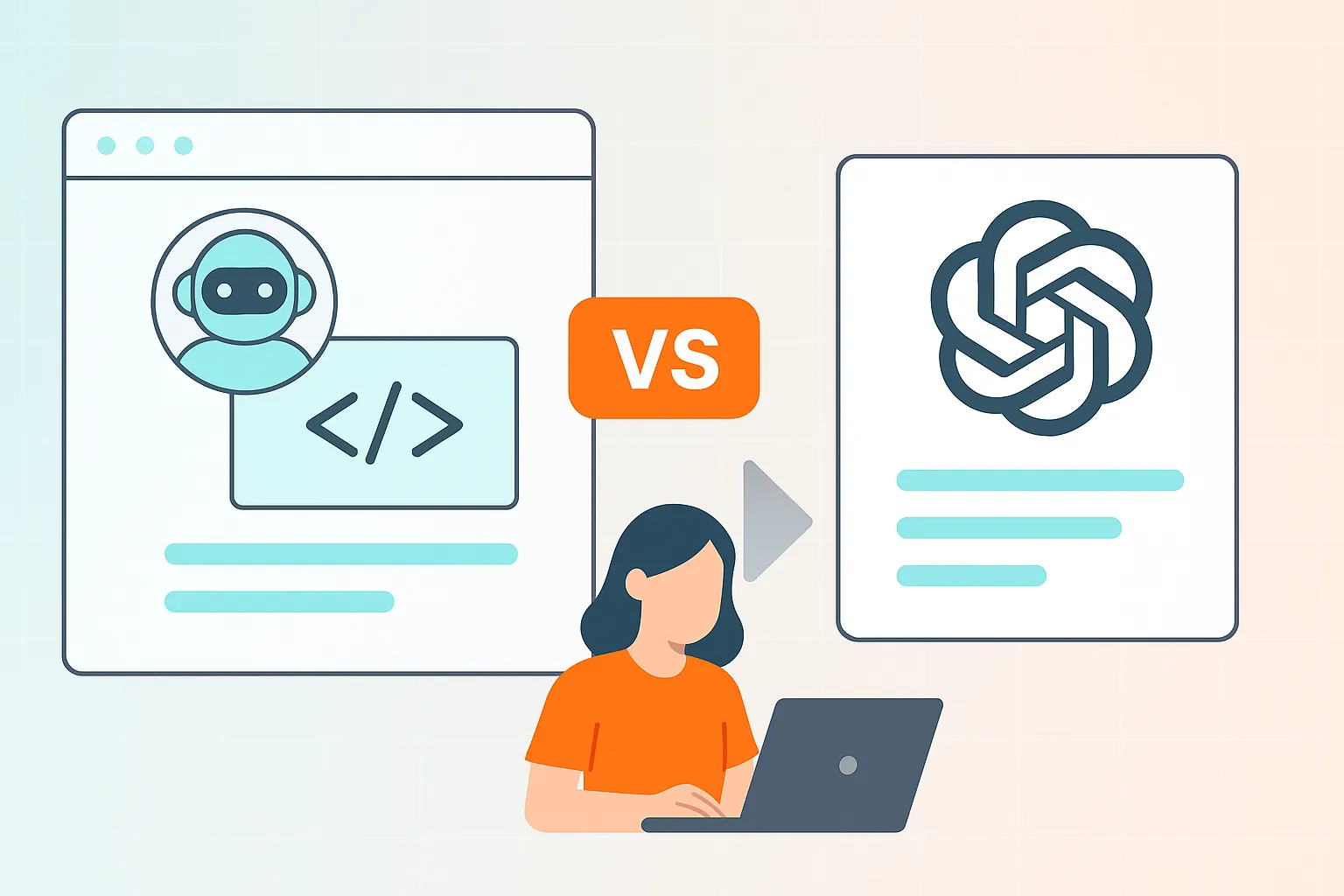The New Imperative: AI in Software Engineering
The world of software development is in the midst of a seismic shift. For decades, the core process of writing, reviewing, and shipping code has remained fundamentally unchanged, relying solely on human ingenuity and collaboration. Today, artificial intelligence is rewriting that playbook. AI-powered development tools are no longer a novelty; they are rapidly becoming a cornerstone of high-performing engineering teams, fundamentally altering workflows and unlocking unprecedented levels of productivity.
These tools are not merely glorified spell-checkers. They serve as active partners in the development process. AI-powered code generators can automatically produce boilerplate code snippets, suggest complex optimizations, and even create entire application scaffolds based on predefined parameters. The impact is undeniable: developers enhance their productivity, and overall development time is significantly reduced. This acceleration allows businesses to innovate faster, respond more quickly to market demands, and focus their most valuable resource—engineering talent—on solving unique, high-impact problems rather than reinventing the wheel.
At the forefront of this revolution are two powerful contenders: GitHub Copilot and Anthropic’s Claude. Each offers a distinct approach to AI-assisted coding, and for engineering leaders, the choice is not always clear. This article provides an objective, in-depth comparison of these two leading AI assistants, exploring their core features, underlying technologies, strengths, and ideal use cases. More importantly, we will explore why simply choosing a tool is not enough, and how a strategic approach to AI integration is the key to truly transforming your engineering organization.
Introducing the Contenders: A Tale of Two AI Assistants
While many AI tools exist, GitHub Copilot and Anthropic’s Claude have emerged as the primary choices for engineering teams looking to leverage generative AI. They represent two different philosophies and technical approaches to the same fundamental goal: making developers faster, smarter, and more effective.
GitHub Copilot: The Ubiquitous Pair Programmer
Launched by GitHub in partnership with OpenAI, GitHub Copilot was one of the first AI coding assistants to achieve mainstream adoption. It is deeply integrated into the developer’s primary workspace—the Integrated Development Environment (IDE)—and functions as an ever-present “pair programmer.” As a developer types, Copilot offers real-time, inline suggestions, completing single lines, entire functions, and even test suites with remarkable speed.
Its widespread popularity is evident. Our research for the upcoming 2025 AI-Enablement Benchmark Report shows that Development & Coding has the highest AI adoption rate of any phase in the software development lifecycle, at 84%, with GitHub Copilot being one of the most popular tools in this category. Its strength lies in its immediacy and its training on a vast corpus of public code, making it exceptionally proficient at recognizing and generating common patterns and boilerplate code across dozens of programming languages.
Anthropic’s Claude: The Thoughtful Code Architect
Anthropic’s Claude represents a different paradigm. While it also possesses powerful code generation capabilities, its design emphasizes deep reasoning, safety, and a massive context window. This allows Claude to “read” and comprehend hundreds of thousands of lines of code at once, giving it a holistic understanding of an entire codebase. This is a stark contrast to many other models that can only consider the immediate file or a small snippet of code.
At MetaCTO, we leverage Anthropic Claude for its “ethical and precise AI response modeling,” a characteristic that translates directly to its coding abilities. It excels not just at writing code, but at reasoning about it. This makes it an invaluable assistant for complex tasks like large-scale refactoring, debugging subtle issues that span multiple files, understanding legacy codebases, and even discussing high-level architectural decisions. It functions less like a fast-typing pair programmer and more like a senior architect you can consult with.
Head-to-Head: A Detailed Feature Comparison
To understand which tool might be right for your team, it’s essential to break down their capabilities feature by feature. While both can generate code, their methods, strengths, and ideal applications differ significantly.
| Feature | GitHub Copilot | Anthropic’s Claude | Implications for Engineering Teams |
|---|---|---|---|
| Underlying Technology | Powered by OpenAI’s GPT models, specifically tuned for code. | Powered by Anthropic’s proprietary models, designed for safety and advanced reasoning. | Copilot is optimized for pattern matching from a massive code dataset. Claude is optimized for understanding complex instructions and maintaining context over large inputs. |
| Primary Interface | Primarily inline, real-time code suggestions directly in the IDE. | Primarily a conversational chat interface, capable of handling large code blocks and complex prompts. | Copilot excels at “in-the-flow” assistance, minimizing context switching. Claude is better for deliberate, complex tasks that require discussion and iteration. |
| Context Awareness | Limited context window, primarily focused on the current file and open tabs. | Extremely large context window (up to 200,000 tokens), allowing it to analyze entire codebases. | For localized changes and boilerplate, Copilot is sufficient. For refactoring, cross-repository changes, or understanding legacy systems, Claude’s large context is a game-changer. |
| Code Generation Style | Predictive and immediate. It anticipates what you’re about to type and offers a likely completion. | Explanatory and comprehensive. It can generate code and explain its reasoning, alternatives, and potential trade-offs. | Copilot boosts typing speed and reduces rote work. Claude enhances understanding and helps developers make more informed decisions. |
| Debugging & Analysis | Can suggest fixes for localized errors it sees in the immediate context. | Can analyze stack traces, logs, and multiple files to hypothesize root causes of complex bugs. | Copilot helps fix syntax errors and simple logic flaws. Claude can act as a partner in debugging systemic or architectural issues. |
| Safety & Security | Relies on filters and training data curation to avoid generating insecure code. | Built with a “Constitutional AI” framework to prioritize helpful and harmless responses, reducing the likelihood of suggesting vulnerabilities. | Both tools require human oversight, but Claude’s inherent safety focus may provide an edge for teams in security-sensitive industries. |
Ideal Use Cases: Matching the Tool to the Task
The true value of these tools is realized when they are applied to the right tasks. A carpenter wouldn’t use a sledgehammer to drive a finishing nail, and an engineering team shouldn’t use a large-context model for simple autocompletion.
When to Choose GitHub Copilot
Copilot shines in high-frequency, low-complexity scenarios where speed and minimal interruption are key. It’s the ideal choice for:
- Writing Boilerplate Code: Setting up new components, classes, or modules in frameworks like React, Django, or Rails.
- Generating Unit Tests: Quickly creating test cases for well-defined functions, saving hours of repetitive work.
- Implementing Standard Algorithms: Autocompleting common algorithms like sorting, searching, or data transformations without needing to look up the exact syntax.
- Translating Code: Converting snippets of code from one language to another (e.g., Python to JavaScript).
In these scenarios, Copilot’s tight IDE integration and predictive nature provide an immediate productivity boost, allowing developers to stay focused on the logic of their work.
When to Choose Claude
Claude’s strengths are in complex, high-context tasks that require deep understanding and reasoning. It’s the superior choice for:
- Large-Scale Refactoring: Planning and executing changes across multiple files or an entire application while understanding all interdependencies.
- Onboarding and Code Discovery: Asking Claude to explain a complex, unfamiliar section of the codebase to a new team member, complete with examples.
- Complex Debugging: Pasting in an entire error log, relevant code files, and asking for hypotheses about the root cause of a bug.
- Architectural Design: Describing a new feature in plain English and asking Claude to propose a technical design, outline the necessary components, and generate the initial scaffolding.
- Code Modernization: Feeding a legacy codebase (e.g., an old jQuery application) and asking for a plan and code to migrate it to a modern framework like React or Vue.
For these strategic tasks, Claude acts as a force multiplier, augmenting a developer’s ability to reason about complex systems.
Beyond the Tool: Why Strategy is Everything
The decision between Claude and Copilot is important, but it’s only the first step. We have seen firsthand that simply giving developers a new tool without a plan leads to chaos and wasted potential. Many organizations are stuck in the early stages of AI adoption, characterized by ad-hoc experimentation and a lack of clear governance.
As our AI-Enabled Engineering Maturity Index (AEMI) framework shows, most teams start at Level 1 (Reactive) or Level 2 (Experimental). At these stages, developers may use different tools with no shared best practices, and leaders struggle to measure any real impact. This is compounded by immense pressure from executives to “use AI,” with 67% of engineering leaders feeling this pressure from their C-suite, even though only about 1% consider their organizations fully AI-mature.
Without a strategy, teams can’t answer critical questions:
- Are we using these tools securely?
- How do we measure the ROI of our AI tool investment?
- How do we ensure consistent usage and quality across the team?
- Which tool is right for which part of our software development lifecycle?
A tool is not a strategy. True transformation requires a deliberate, structured approach to integrating AI into your team’s DNA.
Charting Your Course: Building an AI-Enablement Roadmap with MetaCTO
This is where we excel. With over 20 years of experience as founders and CTOs who have launched more than 100 apps, we bridge the critical gap between powerful AI technology and effective business strategy. We help organizations move from chaotic experimentation to intentional, high-impact AI adoption.
Our approach is systematic and tailored to your specific needs, following a proven process:
AI Consultation & Discovery: We begin by understanding your business, your goals, and your current workflows. We use frameworks like the AEMI to benchmark your team’s current AI maturity, assessing your existing data, tools, and processes to uncover the highest-impact opportunities.
AI Strategy & Planning: Armed with a deep understanding of your needs, we design a comprehensive roadmap. This plan goes far beyond just one tool; it outlines the optimal AI architecture, data pipelines, and necessary integrations across the entire software development lifecycle—from planning and design to testing and deployment, as detailed in our research for the 2025 AI-Enablement Benchmark Report.
Development & Integration: Our expert engineers don’t just advise; they build. We handle the seamless integration of AI models and tools like Claude and Copilot into your existing systems, ensuring smooth operation without disrupting your team’s velocity.
Training, Optimization, and Support: We provide hands-on training and establish best practices to ensure your team gets the most out of your new capabilities. After launch, we fine-tune models based on real-world feedback and provide ongoing support, refining performance and adjusting the strategy as your business evolves to ensure AI remains a valuable tool for the long haul.
Conclusion: From Tool Selection to Strategic Transformation
The debate between GitHub Copilot and Claude is not about picking a single winner. The reality is that these tools are not mutually exclusive; they are complementary. Copilot is the tactical, high-speed assistant that accelerates moment-to-moment coding. Claude is the strategic, deep-thinking partner for tackling the most complex engineering challenges. The most advanced teams will ultimately leverage both, using the right tool for the right job.
However, the most critical takeaway is that the tool itself is only a small piece of the puzzle. The real competitive advantage comes from building a culture and process of AI enablement. It’s about moving from asking “Which tool should we buy?” to “How can we strategically integrate AI across our entire development process to drive measurable business outcomes?”
Choosing the right AI coding assistant is a critical first step, but integrating it effectively for maximum ROI is the real challenge. If you’re ready to move beyond ad-hoc tool adoption and build a true AI-enablement strategy, you need an experienced partner to guide you.
Talk with an AI app development expert at MetaCTO to assess your team’s AI maturity and build a roadmap for transforming your software development lifecycle.

